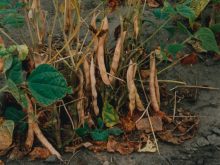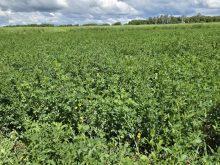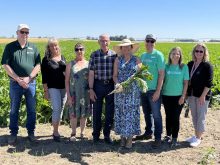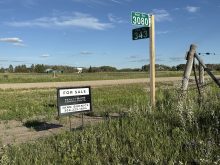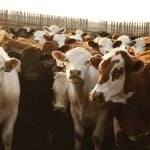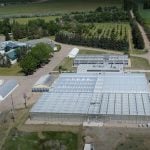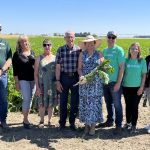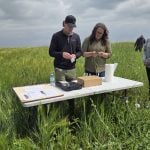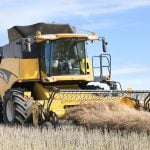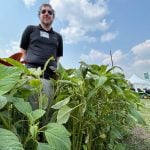The increase in soil testing is driven by fertilizer costs, a push for higher yields and the ability to extract more meaningful information from the analysis.
“Soil testing got a bum rap for many years because of the way people interpreted the results. It was a misunderstanding,” said Terry Aberhart, an Agri-Trend crop adviser in Langenburg, Sask.
The old soil test data was based on farming methods dating back to the 1950s. While the soil lab’s testing and analysis were probably accurate, nobody was really sure how to use the information or whether they were using it correctly.
Read Also
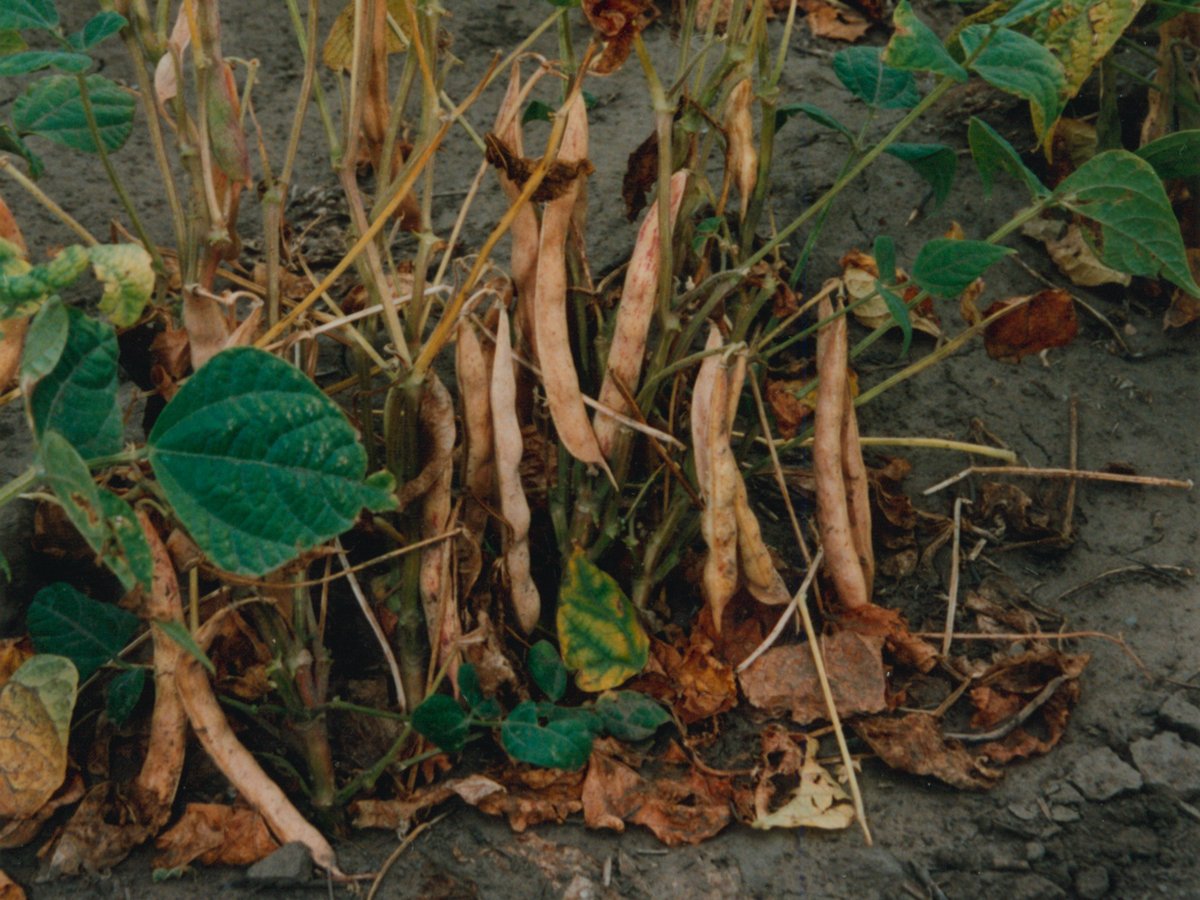
Dry bean seeded acreage in Manitoba hits 20-year high
Dry bean acreage across all types reached around 207,000 acres in 2025, representing a significant increase from last year’s 182,000 acres.
That problem was compounded because significant factors were ignored, such as field history, nutrient extraction, extreme weather conditions and basic field management.
“You’d get some guy to come out from your fertilizer dealer, and he’d pull some samples.
“If you liked the recommendations, you followed them. If you didn’t like them, you tossed them out. We don’t do things like that anymore.
“In all honesty, a grower doesn’t gain anything by just going out and pulling some samples like we used to. It’s a waste of time and money.”
Aberhart said farmers need a logical, agronomically sound reason for each sample site. If due diligence is being done from the start and if the samples all come from GPS referenced points, they will get meaningful results.
Better background provides better recommendations. Aberhart wants a complete field history, yield maps, topography maps and salinity maps, if possible.
Even the type of field equipment enters into the equation. He needs the details on the seeding equipment, sprayer and combine. These factors must be considered before he selects soil test sites.
“At Agri-Trend, we start with GPS referenced sample sites that are selected for a good reason. And we go to those same sites every year.
“Once we have three years of soil tests along with yield data, we can start to follow what’s happening with residual nutrient levels. That lets us make more accurate recommendations.
“The level of confidence in the data starts to build. We have clients now who have been doing strategic soil testing five or six years. Now we can really see some of those trend lines and we can make better predictions.”
Aberhart said field data and soil analysis become even more vital as growers move further into precision farming and variable rate.
“As we progress into more intensive management, it all becomes more knowledge-based.”
Such field management doesn’t necessarily mean more farmers are soil testing. Historically, only 20 to 30 percent of prairie farmers bothered.
But farm consolidation and bigger farms have changed that, said John Heard, a soil fertility specialist with Manitoba Agriculture.
“Farmers today are more scientific, more sophisticated and a lot busier. They use crop advisers and outside consulting agronomists.
“Very few growers today do their own sampling. They have it done by industry or their private agronomist, which is why we target this group with our crop adviser training.
“So with fewer growers farming bigger farms and depending more on third party consultants, there’s no doubt that more acres are being tested.”
Hypothetically, compare 30 percent of 100,000 farmers in 1990 who each farmed 1,000 acres. That’s 30,000 farmers soil testing three million acres if each one did a full program.
Then consider 10,000 hypothetical present day farmers in 2010 who each farm 20,000 acres and follow their agronomists’ soil testing guidelines.
That’s 20 million acres under a soil test regime, which means more prairie acres are in a soil test program. The percentage of farmers who soil test is no longer relevant because of the change in farm size.
The increased tested acreage is the important factor. It means that more acres are being farmed more efficiently and with potentially better profit margins.
Heard said many factors drive the renewed interest in soil testing, but there are three main ones:
• As farms continue to expand, growers need as much information as possible on new land, whether it’s leased or purchased. A soil test is the best way to gain that knowledge before farmers waste a crop year wondering how the new land will perform.
• Even the most ardent opponents of environmental regulation are coming to accept the inevitable. Farms will eventually be monitored if livestock manure is anywhere in the picture. Soil testing gives operators a knowledge-based jump on the regulators.
• Variable rate management is already a reality on many farms. Zone management ultimately requires soil analysis. Heard said variable rate has guided a lot of growers into the soil test labs.
He said that even growers who resist the variable rate trend now concede there’s a lot of variability within each quarter. They’ve seen it for years, but aren’t sure what to do about it.
Regardless of which agronomist consulting service farmers pick or which system they use, soil testing will definitely be part of the program.
Heard said the updated nitrogen recommendations on the website are higher than previous ones because of the improved database and because it recognizes many factors: improved varieties, improved seeding technology, better crop protection, better management and better yields.
“You can’t grow an extra bushel of any crop without consuming additional nitrogen. I think our new nitrogen response curve addresses that fact very well.”
Curtis MacKinnon, one of the founders of Farmers Edge Precision Consulting five years ago, said his clients soil test annually in every management zone and it’s all GPS referenced.
“That’s a must. You absolutely have to do that to get good baseline data,” he said.
“However, we’re about to start to explore whether or not soil sampling is necessary every year.
“Here’s what we’re considering. If a grower has a good log of site specific data, a real good baseline of information, then maybe he can cut back somewhat on soil testing.” MacKinnon said before suggesting such a cutback, he would need a high level of confidence in several years of yield maps, infrared and soil tests and topography and electro conductivity maps if available.
“We’re not advocating any cutbacks at this time, but it may be an option in the future.”
He said the thought progression of growers usually follows the same pattern, but at different rates. First, they work on quarter section fields.
“The client learns something about the field and he’s happy. Then he says, ‘you know, that used to be two 80s. Maybe we should sample it that way.’
“That’s a big step forward. We get better data to work with and the client learns more. Then he says, ‘well, we have a higher zone and a lower zone here. Lets sample it like that.’
“And that’s the way the thought progression works. Sometimes it’s fast forward. Sometimes it’s slower. But it always leads to a better understanding of the soil for the client. That’s the main point.”
For the best result, knowledge of the soil should be localized for each specific farm.
“For example, on a regional basis, we know that you don’t try to bank nutrients in the soil around Carberry because they’ll all leech away.
“In the Red River Valley, you know there’s a high risk of flooding and de-nitrification.”
He said Farmers Edge helps clients identify those kinds of limitations and then fertilize accordingly. It tries to bring that understanding from the broad regional level down to a farm-by-farm level.
MacKinnon said there are two basic methods for setting up a precision ag system on any farm.
The grid approach is to start with a soil audit based on grid sampling. This approach is intensive and costly.
“It tells you where your nutrients are located in the field, but it doesn’t tell you anything about where your productivity is located.
“The grid can tell you there’s an area very low in phosphate. So you assume it’s been a high-yielding area because phosphate is normally removed by big crop yields.
“But you really don’t know that for sure. It’s just an assumption. And you’ll still need yield maps to confirm it. It’s backwards. It’s working in reverse.”
MacKinnon said the other method is to first create management zones based on yield data and infrared crop analysis along with available historical data. This includes all previous soil tests.
Before Farmers Edge spends money on soil testing, it establishes these productivity zones so it knows the questions it wants to answer.
“This gives us a high degree of confidence in the soil test. It makes the data more valuable to the client.”
Farmers Edge has been doing third party soil test work for Viterra. MacKinnon said this is mostly composite sampling, and it’s not the sort of thing he recommends.
“I don’t think a composite soil sample provides really good information because it’s an average. It’s not site specific.
“We’ve had guys asking us to sample three quarters and treat it as one field. Well, that’s a huge volume of soil and there’s going to be huge variations from one quarter to the next. You just can’t do it that way.”
MacKinnon said some clients are driven by the desire to know more about their soil. And now that there are tools available to help growers gain that knowledge, these farmers are Grade A students.
As environmental regulations and manure management planning hovers on the horizon, more growers are becoming prudent about how they use manure and commercial fertilizers. Precision ag management is the only way they can deal with these regulations.
MacKinnon conceded that in the big picture, fertilizer prices are the biggest driving force behind the overall growth in the precision ag consulting business.
“Buying nitrogen at 60 cents a pound will be risky business. Precision ag is a risk management tool that helps deal with that risk.
“But if things improve for growers to the point where nitrogen is back down to 20 cents and your fertilizer bill drops to 20 bucks an acre, then there’s no risk in throwing on some extra just to make sure.… At 20 cent nitrogen, there’d be no risk and we’d be out of business.”
And most of those new soil test labs across North America would likely sit vacant.





